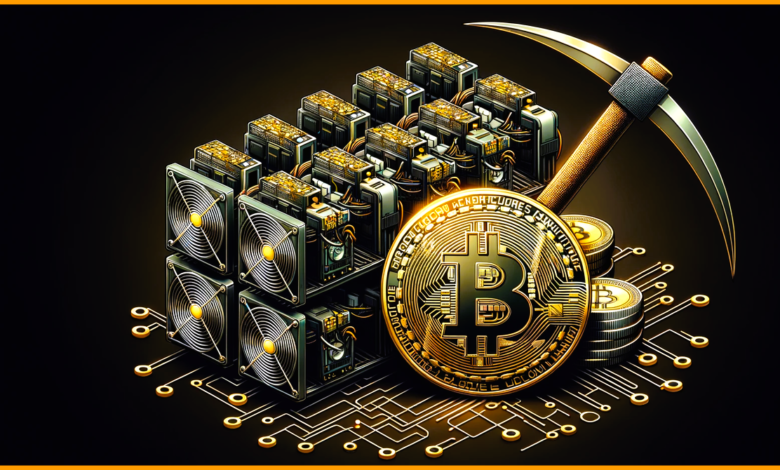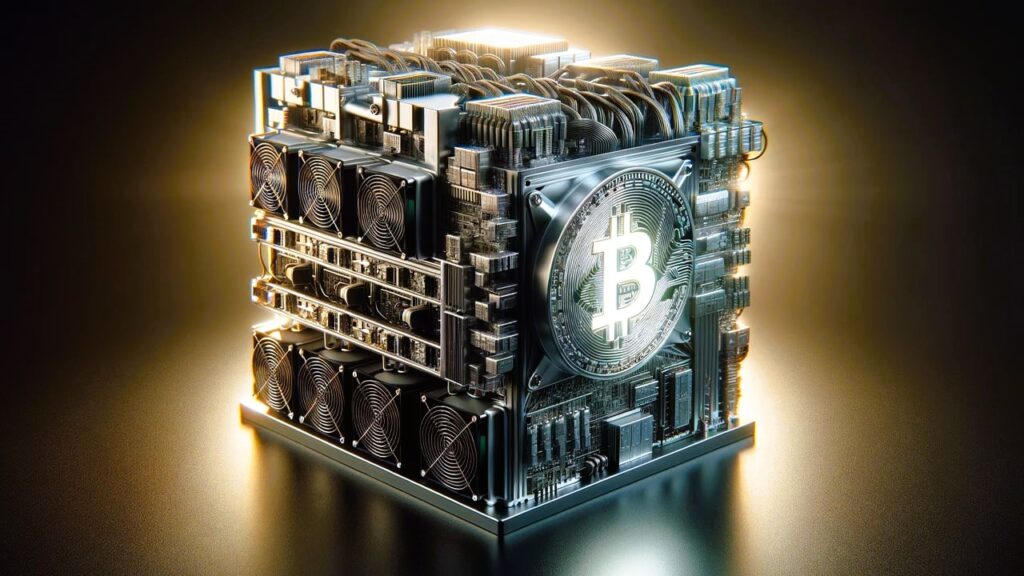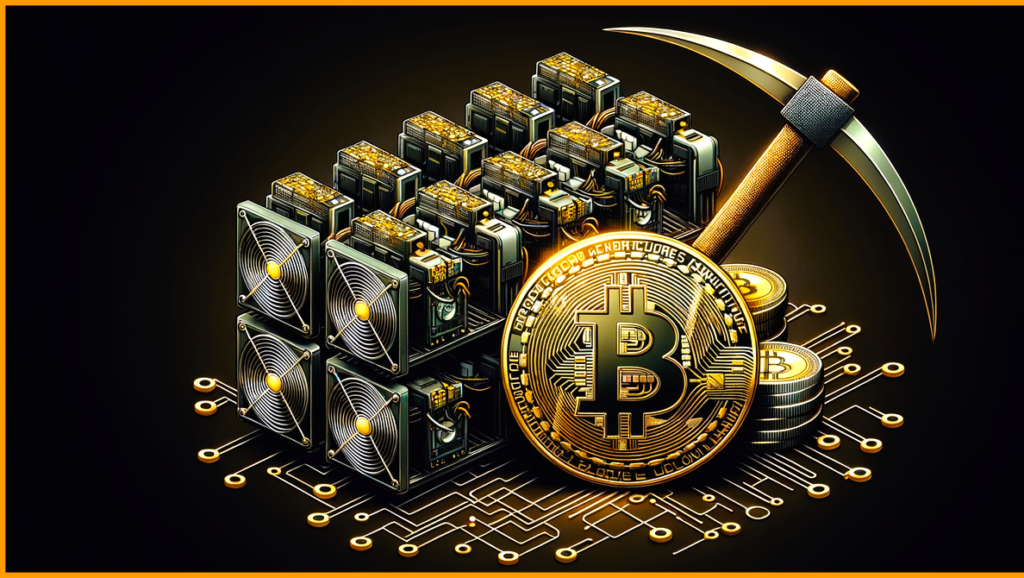
Table of Contents
1. Introduction
This guide is designed for intermediates, so if you are a beginner, please take note of the important things. I will be talking about the terms, assuming you are already familiar with Bitcoin. Bitcoin mining is the process of creating or making Bitcoin valid. Bitcoin has no central government, so it uses decentralized control. It was created to be more secure and private. So, we should prioritize privacy, but we still need to make Bitcoin valid. The validation process involves changing or creating new data, such as changing a transaction from an invalid status to a valid status. This can be done through consensus on the Bitcoin network. This process is carried out by Bitcoin users who have a special permission called “miner”. And finally, miners are incentivized for their work. Currently, the incentive is Bitcoin. However, over time, the amount of Bitcoin rewarded will decrease until it reaches 0 in the year 2140. But the value of Bitcoin is expected to increase, so we should not exchange it as soon as possible. We should HOLD it until we become rich, as it is a long-term investment.

Let’s say hello to everyone who wants to be a Bitcoin miner. Or maybe you are already a Bitcoin miner, but you want to mine in paradise. I will teach you how to mine Bitcoin in Bali. How much money could be spent approximately until you make a profit with the bitcoin you mine? This guide contains steps and estimations that will make you more confident and safe when mining with your own rig.
2. Setting Up Your Mining Operation
To successfully extract and generate bitcoin, you will need to set up and run a bitcoin mining operation in Bali. This can be done on your own with a pen or paper in hand while taking notes and planning, or with an all-out rig with GPUs and mining rigs in mind. Whichever way you go, it is essential and required of you to make a bitcoin wallet because this is how you will receive any bitcoin mined and how it will be stored. Using an online wallet or a wallet on the exchange you are mining is fine, but the best security practices are to have a cold storage wallet. This truly puts you in control of your own money, and if you are serious, you will want that. A cold storage wallet could be set up via a wallet generator printed and stored in your safety deposit box or in a bank, or for better accessibility, a product such as the Nano Ledger. Now, the next step is to login with your wallet and immediately change your password (from the temporary one seen on the setup of the wallet) to add an extra layer of security. Then, you need to append your wallet to the mining software or/and the pool account settings, and then your wallet will be associated with them, and you will be receiving bitcoin in that wallet from mining. It is also very important to check that the address is correct. Wrongfully sending mined bitcoin to the wrong address can be disastrous, as it is unlikely it can be found and retrieved. This can be simply done by copying and pasting a few characters of the address into the web and seeing what comes up. Now your wallet is working with your mining, but the next few steps are to make sure this mining income goes to good use on top of securing good earnings.
2.1. Choosing the Right Location
Because of the cool climate and cheap electricity, many farmers have moved their operations to cooler parts of Bali. In these areas, it is often possible to find a good-sized house with land for a cheaper price than in the busier parts of South Bali, and rent will be much lower. For those using ASIC hardware or thinking about it, these areas can prove to be the perfect location for a mining operation. Large houses are plentiful and seriously undervalued. A group of miners could rent a large house, each paying $50–$100 a month for their share, and set up a rig in their room. With cheap electricity, this could prove to be very profitable. Due to the low cost of living in these areas, you wouldn’t need to make much to get by, and as difficulty increases in the future and returns diminish, cost-saving strategies such as this will become more and more necessary. Large houses often come with large garages too; these could easily be the location for a small-scale mining operation, and the main living quarters could be rented out for an extra income.
The key to making a successful mining operation in Bali is to find the right location. This will vary depending on whether you decide to mine with ASIC hardware or a GPU, but some general advice can be found below.
2.2. Selecting the Best Mining Hardware
There are a variety of factors that contribute to whether a mining device is good or bad. These fluctuate depending on what you are looking to get out of mining. Here’s a brief overview of several popular devices for each cryptocurrency, a look at the currency that they will be mining, power consumption from the device, and the current return on investment (taking into account the current difficulty and exchange rate for the currency).
It is important to remember that, when it comes to cryptocurrency mining, one size does not fit all. To be more specific, some devices are better suited to mining specific types of digital currency than others. Mining may also depend on what the current market trend is. As an example, if Bitcoin mining were to become unprofitable, it would be more logical to resell the Bitcoin mining hardware and change over to a different proof-of-work currency.
2.3. Setting Up a Secure Network
Firstly, it’s important to have a password-protected wireless access point. The significance of this is that it will prevent freeloaders from using your wireless network service, potentially slowing down your connection. An open network can be easily sniffed out, leaving it vulnerable to a MITM attack. A better alternative to using a wireless network is to connect the miners directly to the wireless access point using an Ethernet cable. This way, you eliminate the wireless network and, at the same time, prevent a rogue mining node from being set up at a different location. This type of attack is known as a triple mining attack, which has the potential to slow down the difficulty levels and affect the Bitcoin lifestyle.
A secure network is essential when it comes to mining Bitcoin. Since the flow of network traffic is needed for the transactions to be completed when mining, there’s increased vulnerability and a higher probability of being a victim of a man-in-the Middle attack. MITM attacks are when a hacker tries to get in the middle of an existing online connection with the intent of reading the communication or possibly altering it. There are no foolproof ways to prevent all forms of a MITM attack, but taking the time to set up a secure network will significantly decrease the probability of an attack occurring.
3. Joining a Mining Pool
The first step to starting using any GPU-based Bitcoin mining tools is to understand the idea of “mining pools.”. The idea is to join a “pool” of other miners who share their earnings or work on a joint project to increase their earnings (much like a business arrangement). The earnings are paid directly to the mining software and then automatically transferred to the user’s account. This allows many low-frequency miners to have the steady income required to keep active. But as this guide becomes outdated, the era of half-serious low-frequency GPU mining is over, and the profits and margins for all mining are far lower. For full-time or more modern miners, the best method of making an income is to find a method of “solo” mining as described later, but in the context of Bitcoin, the odds are a lot like a lottery ticket, and the reward is reduced. Mining pools can serve as a representation of the Bitcoin network itself, but they still have their own advantages and disadvantages for the network. When selecting a pool, you’ll want to consider size, method of payment, stability and payout frequency, schedule of fees, and the pool location. But if you can cross-reference these factors with the pool’s past earnings of a known participant, you’ll have an accurate projection of what you’ll earn for your work.

For those looking to mine some real money for static income, you can start today by using our guide and the software provided. Of course, this is entirely different from trading or investing in Bitcoin. If you already have a gaming PC with one or more modern GPUs, you can still mine with the system, and all you need to transfer your digital currency to real money is an exchange. Many can be found with a quick search for the term “bitcoin exchange.”.
3.1. Researching and Selecting a Mining Pool
When doing web research on a new coin or mining pool, many search engines will be biased or simply present outdated information. It is best to consult forums such as Bitcointalk or Kaiko in the mining section for mining-related topics. This has a smaller crowd than other sections of the site and forums. Reputable Discord servers can be a good source of real-time information.
You will need to ask yourself what your motives are for mining a coin. Do you believe in the coin and want to support the network? Are you mining for the purpose of speculative trading? Do you simply want to acquire a certain coin at the lowest possible price? Always keep in mind that it can be infinitely more profitable for me.
Because of the competitive nature of mining now, it can often be more profitable to simply buy the coin that you are mining. Always calculate the expected ROI before putting in a serious amount of mining. This can be difficult since the first register to have faults is at.
It’s important to note that it’s no longer profitable to mine on a tier (Mhs) or GPU below 100 Mhs. It is still possible to find a good mining pool that will allow you to mine ETH and receive payouts with a 100 MHS rig, but it will most likely not be a large pool, and at least 5 large pools will always be late, if ever. In that case, you would simply be buying ETH. When building a Zen system, it is possible to make a pool at or near launch and have good success since Zen is still CPU-mineable.
Before you start mining, you will need to research and select a mining pool. Over the years, many different mining pools have seen significant changes, and many of the original pools are no longer around. This can be both a good and a bad thing. Smaller mining pools are usually more profitable (and are attacked more often by hackers who want to disrupt the network), while larger pools have a higher success rate since they find blocks more often.
3.2. Creating an Account and Setting Up Your Miner
To create an account, navigate to the pool’s homepage and locate the “Sign Up” or “Register” link. This will take you to a page where you will be prompted to input a username, password, and some other information. Most pools will email you a confirmation link, which you will need to click to fully activate your account. You are now ready to start mining, but first take a few minutes to configure your miner. We strongly recommend creating a separate account for mining and not use your daily one. This is because it can be demanding on your internet connection and anything that is demanding on a connection can have effects on general computer use. Most online wallets or exchanges offer a free account; creating one on these sites will also be a good test for when you come to pulling your funds out. Step 4: Choose your account settings. After being set up with a pool account, you’ll need to add your wallet address to your account settings. This will enable you to start mining. Depending on the pool you’ve signed up with, you will be given the option to add your address on the “My Account” page. Now, when you’ve decided what currency to mine, BitStrings has a helpful guide for this. You can decide whether you want to auto-set exchange your mined coins or you want to hold them, We suggest you use auto-set exchange as a useful tool that can save time and effort. Step 5: Download a miner. Now you’ve chosen a pool and got your account set up, it’s time to download a miner. Mining software is offered by the pool to help you earn more, Here are some examples: BTC and BTG: EWBF’s CUDA miner Nvidia: CC Miner Nvidia/AMD: SG Miner CPU: You will need to download Pool CPU miner Download your selected mining program and unzip the files into a folder. This can be done with a program such as WinRAR. Step 6: Finding your miner’s address. Open the mining software and input your pool settings, including the pool’s address, your account, and any other required information. With this done, you’ll be given a worker’s address, which you will use as the username for your miner. Step 7: Start mining! With your computer all set up, you can now start mining. Run the program and do a few tests to ensure that your system is stable with your newfound mining power. You are now successfully set up and ready to start earning some digital cash!
4. Managing and Optimizing Your Mining Operation
Getting involved with Bitcoin mining can be a great move when you understand how the network operates and how you can maximize your mining performance. Most people who are new or old to Bitcoin mining find that upgrading and purchasing the most modern mining and graphic card units is the best value for their money. While the field has been shifting towards volatility in newly released ASIC machines, many find that the depreciation and difficulty go hand in hand with the lack of resale value for an ASIC. GPU mining is still very effective and profitable.

The “Guide to Mining Bitcoin in Bali” points to attacks being an undeniable risk to cryptocurrency holders. The most common scenarios are when an attacker attempts to perform a switch and bait attack, leading to the loss of the victim’s cryptocurrency. 51% of attacks happen when an attacker attempts to control more (51%) of the blockchain’s mining power. When the attacker controls the majority of the mining power, they can cause a controlled centralization point in which the attacker has the ability to block certain transactions and may cause a complete reversal in all preceding and succeeding transactions.
4.1. Monitoring Your Mining Performance
Average hash rate. Check to see your hash rate over a given period. This holds all the cards because it is a predictable metric. If your hash boards are reporting in as working properly, then you should expect your hash rate to be constant. Any fluctuation means you have an issue.
Performance History Chart. This great feature is the “result” of all the hard work you’ve done. When you have a performance report history chart, you are able to see at a glance that your hard work is paying off. Time is money, and with this tool, by seeing if your mining is profitable or not, you will be better prepared to make a decision.
Use web-based monitoring. There are many approaches to checking your mining arrangement. You can use the command line, which provides full details of your hashrate and/or profitability over a period of time. Some mining pools also have a reporting feature, so you can track your progress.
4.2. Troubleshooting Common Issues
If you are using a 3GB card, see the guide on why 3GB cards, one of which turned yellow, are outdated. If you have shares but no coins, you may want to check your pool settings and make sure that automatic payments are set up. Most pools have a system that, once you reach a certain threshold of coins, they will automatically send you the coins with a fee on top.
Firstly, check that your mining rig is actually submitting shares. Most pools have a feature that allows you to see your miner’s hashrate and other details by searching for your wallet address. Make sure that your hashrate is not 0, or if it is, your miner is not saying there is some kind of connection issue. If your miner is not submitting any shares, it’s probably broken. If it’s an old and inefficient card, it may not actually be ‘worth’ mining with anymore, in which case you should retire it and use the increase in electricity savings to invest in some new hardware. If you are technically inclined, you may wish to try and fix it, or there may be someone in the community willing to buy it off you for a little more than it’s worth as a mining ‘project.’
You can troubleshoot the vast majority of issues by using this content to help you along. This will provide general troubleshooting of common issues. For issues specific to a certain miner, there are too many to list, but you can often find the answer by searching the bitcointalk forums. If you ran out of bitcoins before you’re meant to…
4.3. Maximizing Mining Efficiency
The ultimate goal of mining is to be profitable. Bitcoin price increases can offset difficulty increases, allowing for a higher return at times. However, it often makes more sense to simply purchase bitcoins if the time is to be construed as an investment. There are a number of factors that contribute to successful Bitcoin mining: block reward and exchange rate, the number of bitcoins produced each day, transaction fees, time spent mining, and power consumption. High efficiency and well-priced electricity are ideal for miners. Lower energy costs are always a huge plus, with the ideal situation being a mining datacenter in a remote yet cool location. This is the epitome of ‘setting it and forgetting it’.




